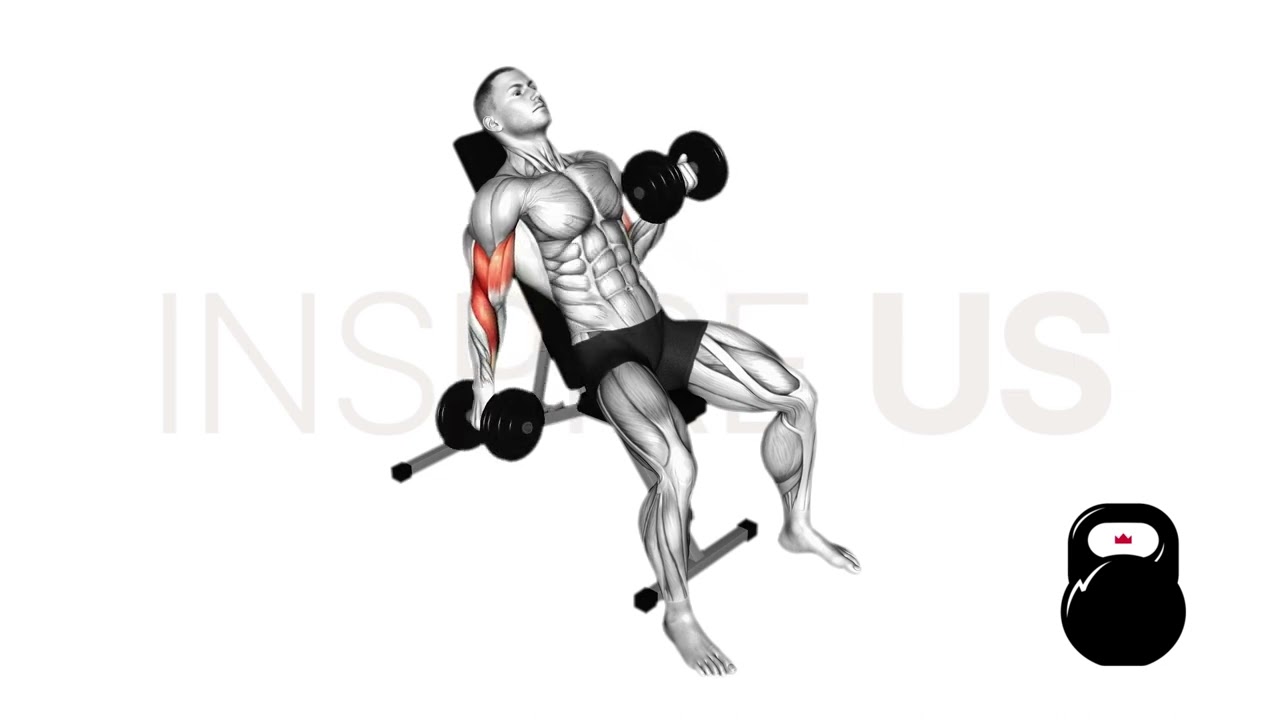Incline Dumbbell Curl: Benefits, Muscles Worked, and More
In more technical terms, the incline dumbbell curl is classified as a single-joint free weight isolation exercise.
It is most often used in bodybuilding or other mass-focused training programs as an accessory movement, where the lifter will perform it for high volume sets so as to maximize hypertrophic response.
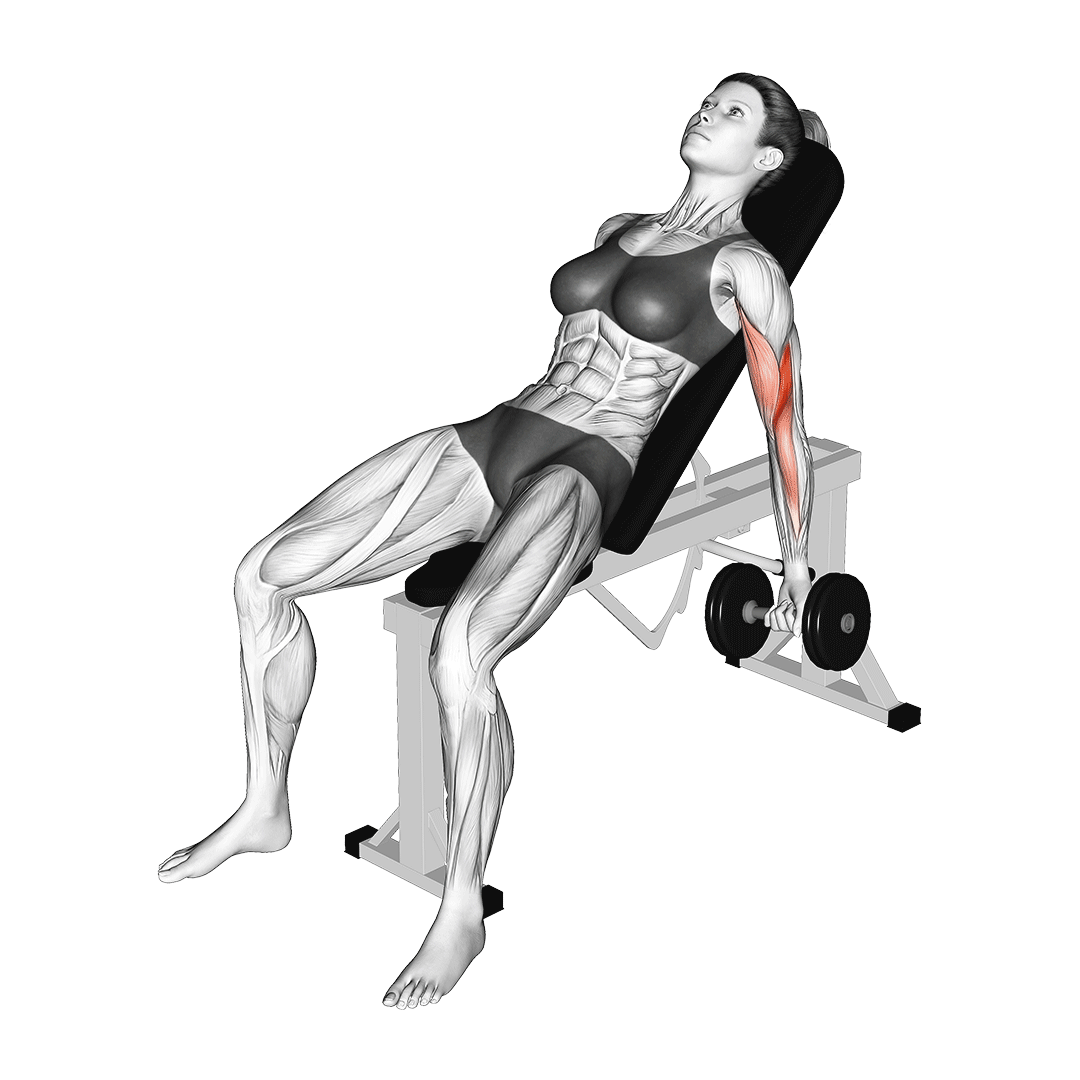
In terms of mechanics, incline dumbbell curls will feature full ROM (range of motion) elbow flexion as the hands are in a supinated position.
Who Should Do Incline Dumbbell Curls?
Incline dumbbell curls are easily accessible and may even be performed by novice weightlifters with little to no experience in resistance training.
In particular however, bodybuilders and other individuals seeking significant biceps hypertrophy will see the most benefit from incline dumbbell curls.
How to do Incline Dumbbell Curls
To perform a repetition of incline dumbbell curls, the lifter will lie atop an incline bench set to a 45 degree angle.
The elbows should be kept in place throughout the set, and the torso firmly pressed against the bench so as to avoid “cheating” the exercise.
Holding a pair of dumbbells in a supinated grip, the lifter will begin with their arms in a state of nearly full extension, before bending at the elbows and contracting their biceps.
Once the forearms make contact with the biceps, the lifter will reverse the motion and slowly lower the dumbbells back to their original spot at the lifter’s sides - thereby completing the repetition.
Benefits of the Incline Dumbbell Curl
Apart from the usual benefits derived from general resistance exercise, the incline dumbbell curl can also impart several other benefits that are unique to it and the few curl variations like it.
Superior Biceps Brachii Activation
Because of the elbow position in relation to the shoulders, the biceps brachii are activated to a greater intensity than with most other biceps isolation movements.
Greater activation equates to greater hypertrophic growth and strength adaptation, and can allow lifters to reinforce their mind-muscle connection if done correctly.
Reinforcement of Elbow Mechanics
The biceps brachii muscle is one of three that make up the elbow flexor muscle group - of which, as the name implies, is directly responsible for biomechanics relating to the elbows.

As such, it should be no surprise that an exercise directly targeting the biceps will also lead to subsequent reinforcement of all mechanics related to it.
When combined with exercises like hammer curls and a proper mobility drill, incline dumbbell curls can help “bulletproof” the elbows, reducing the risk of future injury and countering the degenerative effects of aging.
Wider Range of Motion, Longer Time Under Tension
The incline dumbbell curl’s torso angle creates a wider range in which the arms must move.
When performed correctly (i.e. in a slow and controlled manner), this wide range of motion will result in a significantly long time under tension, thereby resulting in greater biceps growth than would be seen with curl variations of a smaller range of motion.
Furthermore, a wider range of motion will help eliminate biceps-related issues like sticking points or poor flexibility.
Greater Form Adherence
Though both incline and conventional bicep curls are relatively simple in form, many lifters find themselves making mistakes in terms of their actual execution of said exercises.
Incline dumbbell curls eliminate the risk of some of these mistakes by placing the lifter atop an incline bench, of which will prevent the lifter from “cheating” their curl repetitions by swinging the upper body or potentially injuring themselves by positioning the elbows incorrectly.
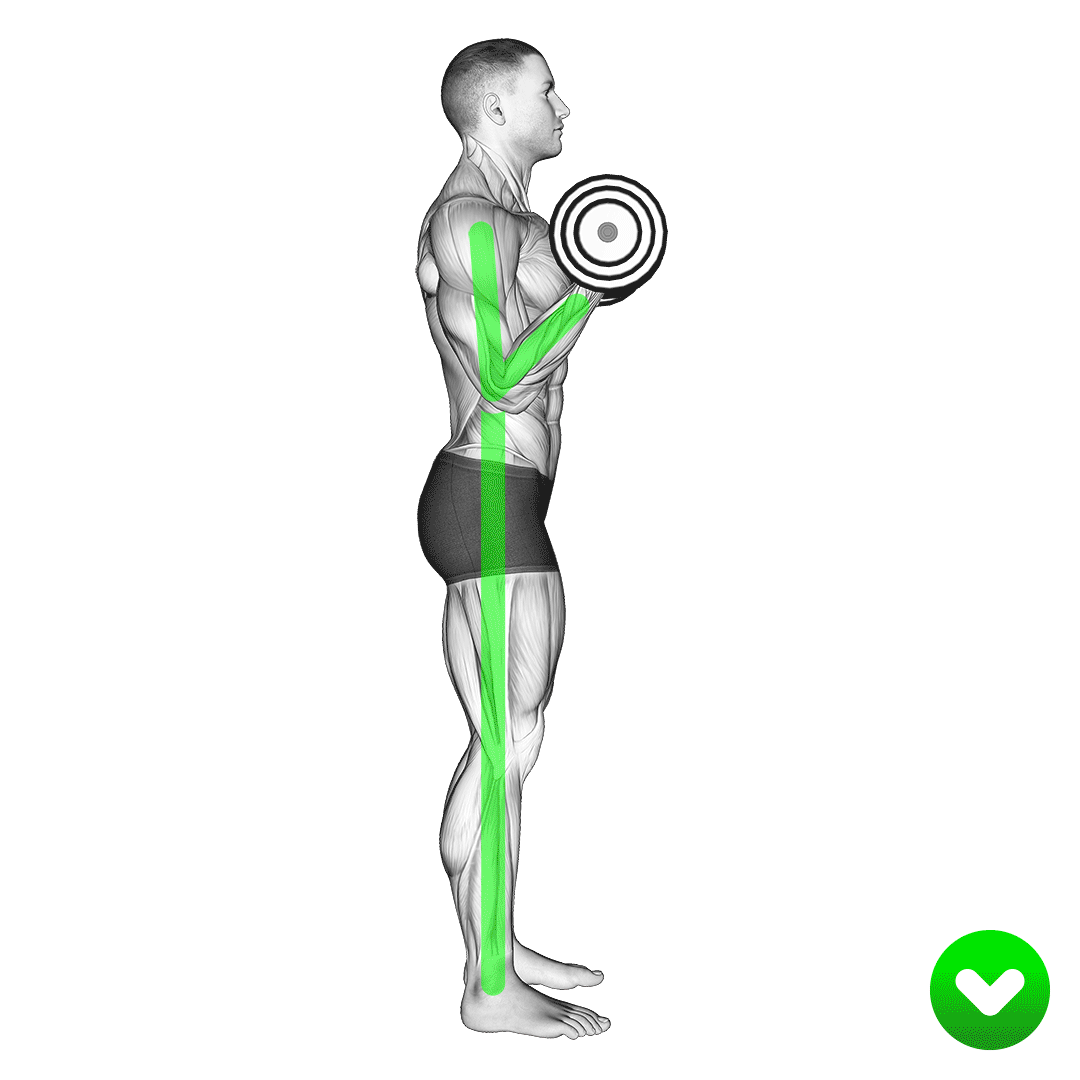
Lifters should keep in mind that while the incline dumbbell curl’s form is indeed easier to adhere to, they must still pay close attention to it so as to ensure no injuries occur.
Muscles Worked by the Incline Dumbbell Curl
The incline dumbbell curl is an isolation exercise, and as such will solely activate the biceps brachii muscles.

Common Incline Dumbbell Curl Mistakes
Despite the simplicity of the incline dumbbell curl, there are still several errors in execution that lifters should look out for.
Poor incline curl form can result in negated benefits or even acute biceps injuries, if left uncorrected.
Swinging the Dumbbells
As is the case in most other curl exercises, swinging the dumbbells to generate momentum can place excessive strain on the elbows - as well as reduce the length of time in which the biceps are under tension.
Swinging the dumbbells is characterized by the lifter jerking the dumbbell upwards in an excessively rapid and uncontrolled manner, or otherwise by allowing the dumbbells to suddenly drop during the latter half of the repetition.
Both instances increase the risk of injury and reduce the effectiveness of the exercise.
To avoid this, each repetition should be performed in a slow and controlled manner, with care taken to ensure that the biceps are the sole muscle outputting force.
“Floating” Elbows
Proper incline dumbbell curl form requires the elbows to move as little as possible, and to keep them positioned at the sides of the torso in order to maximize biceps range of motion.
Detaching the elbows from the sides and allowing them to freely “float” can make the exercise more difficult without necessarily increasing biceps activation or improving results in any way.
Furthermore, doing so can also strain the connective tissues of the elbow joint, potentially resulting in tendinopathy and inflammation.
Incompatible Incline Angle
While the conventional incline dumbbell curl will set the torso at an approximate 45 degree angle to the floor, lifters differ widely in terms of bodily proportion and mobility.
It is unreasonable to stick to performing the exercise at a 45 degree incline if the lifter finds it uncomfortable or limiting.
Instead, lifters can go as low as a 60 degree angle, if doing so makes the exercise safer and more effective for them.
Incline Dumbbell Curl Alternatives and Variations
In the event that the lifter finds the conventional incline dumbbell curl to be insufficient for their needs, there are several variations and alternatives that may be used to take its place, if so desired.
1. Incline Hammer Curls
The incline hammer curl is a ready alternative to the incline dumbbell curl for lifters seeking greater focus on their brachialis and brachioradialis muscles.
On occasion, they are also performed in the same workout so as to maximize arm muscle mass development.
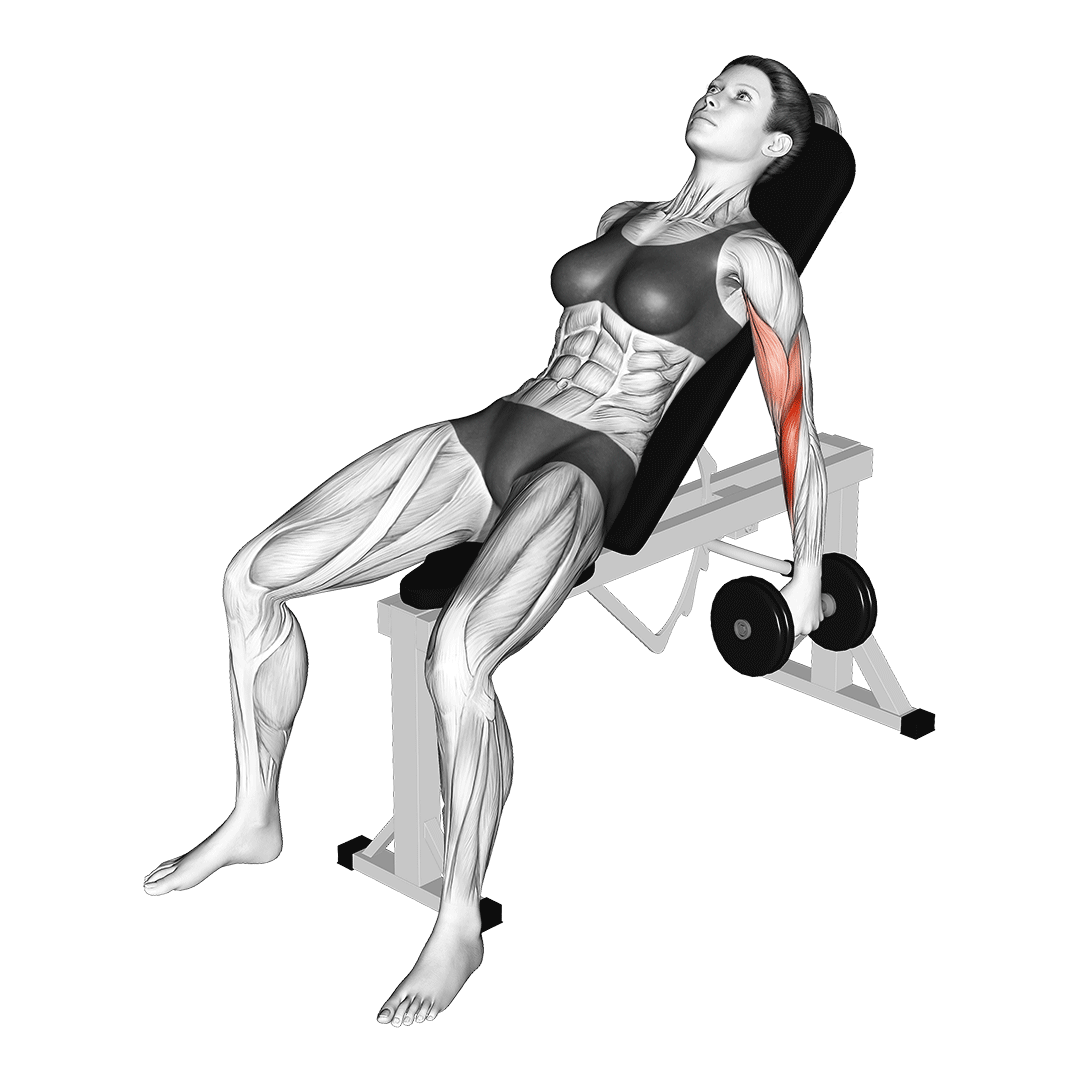
In terms of mechanics and equipment, the incline hammer and incline bicep curl are completely identical, save for the fact that the incline hammer curl involves holding the dumbbells in a neutral grip - causing somewhat less biceps recruitment, but also reducing strain on the wrist and forearms.
2. Prone Incline Dumbbell Curls
Prone incline dumbbell curls are exactly as they sound; conventional incline curls performed with the lifter chest-down atop the bench, rather than placing their back atop it.
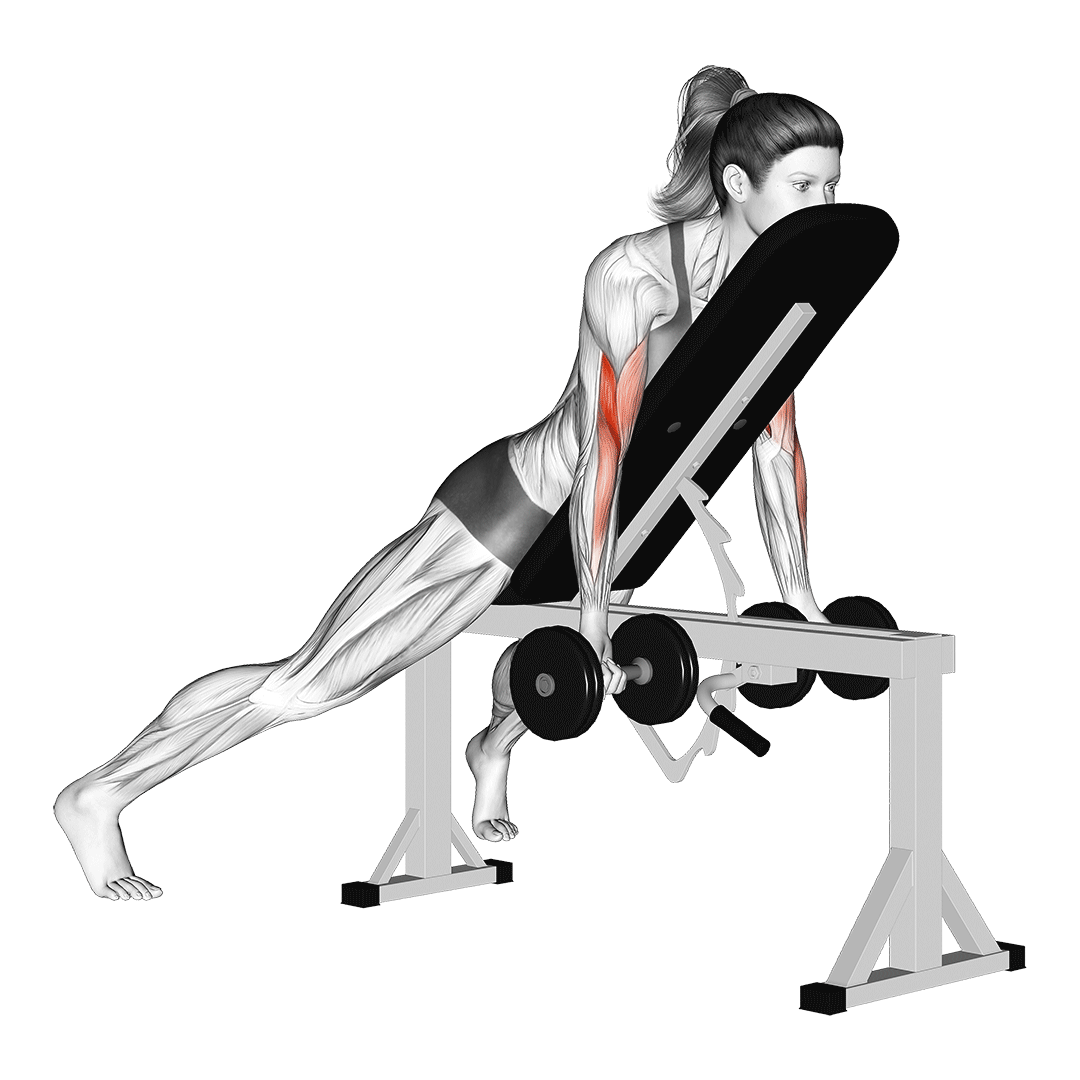
This unconventional change in position can reduce the risk of poor form adherence even further, and allow for an even wider range of motion to be attained.
3. Lying Bicep Curls
For lifters that wish to take their torso incline to the extreme, lying bicep curls are one potential alternative to conventional incline curls.
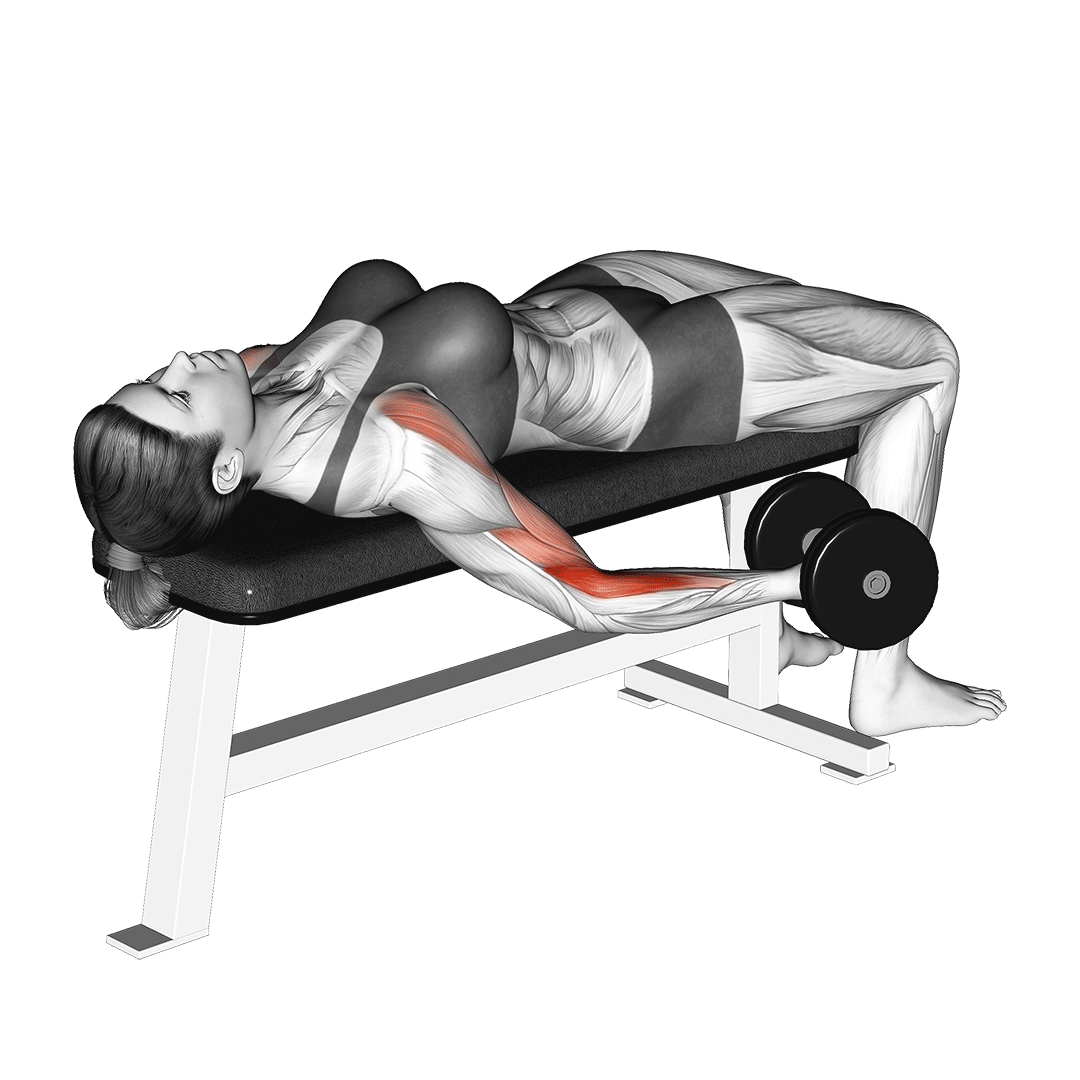
As is clued in by the name, lying bicep curls are performed with the lifter lying face-up atop a bench, with their arms hanging beneath them.
This shares many of the same benefits as incline dumbbell curls, although it may also place the elbows at greater risk of injury.
Frequently Asked Questions (FAQ)
Can You Do Incline Dumbbell Curls Without an Incline Bench?
In theory, yes - incline dumbbell curls can technically be performed without an incline bench.
However, many of the alternatives (like placing an angled pillow on a chair) are ineffective or potentially dangerous, and it is best to avoid performing incline curls without an incline bench.
Instead, a safer and more effective choice is to perform preacher curls - of which share much of the same benefits and intensity as incline dumbbell curls only without the need for an incline bench.
Is the Incline Dumbbell Curl Done at a 45 or a 60 Degree Angle?
Traditional incline dumbbell curls are performed with the torso set at a 45 degree angle to the floor, although taller lifters or those with poor mobility can perform them at a 60 degree angle as well.
How Heavy Should I Go On Incline Curls?
Ideally, incline curls should be performed with as little weight as possible to make them effective. This means avoiding weight that can only be curled for a few repetitions.
At minimum, incline curls should be performed with dumbbells that allow for at least 8 repetitions without the biceps succumbing to fatigue.
References:
1. Oliveira LF, Matta TT, Alves DS, Garcia MA, Vieira TM. Effect of the shoulder position on the biceps brachii emg in different dumbbell curls. J Sports Sci Med. 2009 Mar 1;8(1):24-9. PMID: 24150552; PMCID: PMC3737788.
2. Kasprisin J. E., Grabiner M. D. (2000) Joint angle-dependence of elbow flexor activation levels during isometric and isokinetic maximum voluntary contractions. Clinical Biomechanics 15, 743-749

